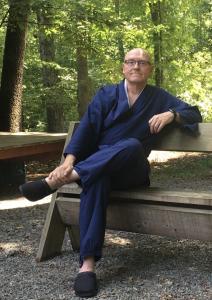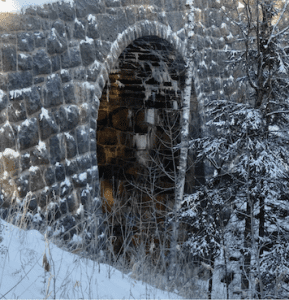This post is a follow-up to Cultivating Verification: A New Shushogi for Now. Near the top of page 3, just before Dōgen praises the kōan “Zhaozhou’s Mu,” he says, “When you meet a teacher, first ask for a kōan, just keep it in mind, and study it diligently.”
This sentence was selected from Dogen’s Extensive Record, Volume 8, Dharma Discourse 14 (EK V8.14), trans. Taigen Leighton and Shohaku Okumura. The alternate translation offered below includes a bit more of the passage, so I’ve underlined the sentence shared above in my version below.
I’ve long been curious about this passage and recently dug into the original, translating my own version. In this post, I’ll make a few observations about this teaching of Dōgen, including a point about how the perspective of the translator (strongly) influences the translation – a point that’s certainly been made before, but I think is particularly clear in this case.
Click here to support my Zen teaching practice at Patreon of which translations and writings like this are one facet. You will also find an advertisement free version of this post there too.
First, though, a bit about the eighth volume of Dogen’s Extensive Record or Eihei koroku, or simply The Record, as I’ll refer to it here. Volume 8 includes twenty informal talks Dōgen gave to students in his room and fourteen dharma discourses (hōgo 法語) addressed to a variety of individual students. The passage that’s in the spotlight here occurs deep in the fourteenth such dharma discourse – so near the end of the volume. Leighton and Okumura note this hōgo was probably “… written for Dōgen’s main patron, Hatano Yoshishige (d. 1258), who was an official on a level comparable to ‘ministers and generals.’ Yoshishige, a nobleman with land in Echizen, later provided the land for Dōgen’s monastery, Eiheiji.”
Note that this was a hōgo for a householder audience, including his main patron and probably associates of his main patron. If, indeed, it was offered by Dōgen to Yoshishige and friends before the move to Eiheiji, it highlights the effectiveness of the discourse. It may have led Yoshishige to saving Dōgen from a difficult situation in the big city with a large land grant and funds for a monastery in the mountains.
Also note that it was written out by Dōgen himself, rather than a talk that his attendant listened to and then recorded after-the-fact, as is the case for much of The Record. Both the audience to whom it was intended and how the discourse was recorded – by Dōgen himself – should add, I would think, to the reliability of the passage.
This hōgo is one of the longest passages of any kind in The Record, coming in at ~1500 words in translation. The main themes include the dangers of selecting a bad teacher, the importance of finding a good teacher, and then advice for how to proceed once one has found a good teacher.
I’ll be returning to this hōgo and offering other snippets of translations here in the future.
Translation
“Honored bodhisattvas, when you meet a dharma master, first ask for a single kōan case, then you must straightforwardly pay attention, diligently keep it in mind, and practice vigorously. The mountain exhausted, the ocean dried up, you will penetrate perfectly with nothing lacking. Standing in the snow [like Huike], attaining the dharma, and negotiating the Way for eight years without being lazy. Pounding rice [like Huineng], transmitting the robe, doing diligent, vigorous practice for eight months.”
Thoughts on the Translation
First, Dōgen’s advice, find a teacher, take up a kōan, and work with it diligently in order to break through or exhaust delusion, is fully consistent with the teaching of almost every other thirteenth century Zen master, regardless of lineage. In fact, I know of no counter examples and say “almost” to acknowledge that there are many that I’m not familiar with.
What might be surprising is that this message is being delivered by Dōgen. You see, we’re told by the Post Meiji Sōtō Orthodox folks that Dōgen’s message was not in alignment with the mainstream of Chinese Chan, especially in that he was not an advocate of kōan work or kenshō. That’s all you need is just this one paragraph to see that this is clearly false. It’s kinda hard to cherry-pick your way around a passage like this one.
In addition, nowadays it is said that the Sōtō style is gentle and gradual, while basking in original awakening. A vigorous passage like the above, though, reveals those prejudices for what they are – an inaccurate attempt to recreate Dōgen’s teaching to satisfy the perceived needs and perspectives of nineteenth and twentieth Japanese householders, but they do not accurately reflect Dōgen’s teaching. Nor are they in tune with what’s needed now.
One dynamic that might be in play here is that Dōgen’s novel expression is confused for a novel meaning. However, in all of Dōgen’s works, he clearly and repeatedly aligns his message with that of all the buddhas and ancestors. In this passage and others in EK V8.14, he uses general terms for “teacher” and does not say “find a Zen master.” In this passage, it’s something like “dharma master” (知識).The Digital Dictionary of Buddhism says these characters refer to “…an eminent monk, a Buddhist teacher, an exemplary practitioner with whom one is intimate.”
Second, Dōgen not only connects kōan work with the root of the Zen transmission in China with the selfless and wholehearted practice of Huike and Huineng, but he also centers their awakening experiences and their post-kenshō training – those eight years and eight months mentioned above. There is a little historical issue here in that the full development of the kōan method, and keyword Dōgen recommends, was uttered long after Huike’s and Huineng’s time. Still, Dōgen equates breaking through the keyword with the heart of these two essential Zen ancestors. So here Dōgen employs the mythical source of the tradition to make his points.
Third and finally, a point about translation. As I mentioned above, the perspective of the translator influences the translation. For a case in point, let’s look at just the last sentence, “Pounding rice [like Huineng], transmitting the robe, doing diligent, vigorous practice for eight months.”
For this sentence, Leighton and Okumura have “The eight-month effort of [Dajian Huineng] pounding rice had the power for [receiving] transmission of the robe.”
Although more could be said, I’d like to compare just one phrase within this sentence. My rendition is “doing diligent, vigorous practice” and they have “had the power.” The Chinese characters are 功夫有力 and form two binomials. The first, 功夫, pronounced “gōngfū” in Chinese and “kufū” in Japanese, is a common expression in Zen texts – and an essential method – including in the great Dahui’s teaching. I usually translate “kufū” as diligent practice or diligent effort.
The second binomial, 有力, means to possess power. So rather than the very vigorous phrase, “Pounding rice [like Huineng], transmitting the robe, doing diligent, vigorous practice…,” Leighton and Okumura offer, “…pounding rice had the power for [receiving] transmission of the robe.” It seems that they leave out kufū/diligent effort and in so doing tamp down the vivid and vital vigor of Dōgen’s expression.
Now, I’m not imputing intend. Buddha knows that I’ve certainly dropped characters in my own work. Another possibility is that they felt that including both “diligent effort” and “possessing power” was redundant. But given that Dōgen wrote all four characters, and given the importance of both “diligent effort” and “possessing power,” I’m called to highlight that for you here. The point being, if a translator sees Dōgen’s teaching as gentle and gradual, then it takes very little for a translation to lean that way.
In any case, like the man said, find a good teacher, receive a kōan, do your utmost to break through, and then integrate the breakthrough within the vertiginous vicissitudes of daily life.
There will be more on this last point with the next translation – coming soon.
Dōshō Port began practicing Zen in 1977 and now co-teaches with his wife, Tetsugan Zummach Sensei, with the Vine of Obstacles Zen, an online training group. Dōshō received dharma transmission from Dainin Katagiri Rōshi and inka shōmei from James Myōun Ford Rōshi in the Harada-Yasutani lineage. He is also the author of Keep Me In Your Heart a While: The Haunting Zen of Dainin Katagiri. Dōshō’s translation and commentary on The Record of Empty Hall: One Hundred Classic Koans, was published in 2021 (Shambhala). His third book, Going Through the Mystery’s One Hundred Questions, is now available. Click here to support the teaching practice of Dōshō Rōshi.













